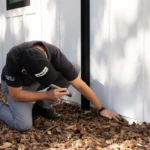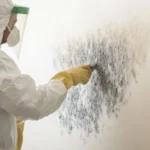Mold is more than just a nuisance—it can cause serious property damage and even impact your health. But when you spot mold in your home, a pressing question comes to mind: does homeowners insurance cover mold? The answer depends on the source and nature of the mold. This comprehensive guide will explain when mold is covered, when it’s not, and what homeowners can do to protect their property.
When Does Homeowners Insurance Cover Mold?
Homeowners insurance typically does cover mold damage—but only when it’s the result of a sudden and accidental covered peril. These may include:
- A burst pipe
- Overflow from appliances
- Water damage from extinguishing a fire
- Ice damming or roof damage from storms
Example:
If a pipe bursts behind your wall and leads to mold growth, your policy may cover both the mold remediation and repairs.
When Doesn’t Insurance Cover Mold?
Mold caused by preventable or long-term issues is generally excluded. Common exclusions include:
- Long-term leaks that go unaddressed
- High indoor humidity and poor ventilation
- Negligent maintenance
- Flooding from natural disasters (unless you have separate flood insurance)
Example:
Mold from a slow-dripping pipe under the sink, ignored for weeks, likely won’t be covered—it’s considered a maintenance issue.
Is Mold Remediation Covered by Insurance?
Yes, but only if the mold stems from a covered peril. In that case, your insurance might help pay for:
- Professional mold testing
- Removal of contaminated materials (drywall, flooring)
- Decontamination and air purification
- Structural repairs
Note: Many policies place a coverage cap for mold damage, typically $1,000 to $10,000.
Does Insurance Cover Mold Removal?
If mold removal is part of a covered claim, like a burst pipe cleanup, it may be included. However, standalone mold removal—especially for cosmetic reasons or natural humidity—isn’t usually reimbursed.
Does Homeowners Insurance Cover Black Mold?
Black mold is treated the same as any other mold under your policy. If it results from a covered peril (e.g., storm or appliance failure), it may be covered. If it forms due to high moisture or negligence, coverage will likely be denied.
Does Home Insurance Cover Mold from Water Damage?
Coverage depends on how the water entered:
| Source of Water Damage | Is Mold Covered? |
| Burst pipe | ✅ Yes |
| Rain through storm-damaged roof | ✅ Yes |
| Overflow from washing machine | ✅ Yes |
| Slow, unnoticed pipe leak | ❌ No |
| External flooding | ❌ Not without flood insurance |
Filing a Mold Insurance Claim: Step-by-Step
- Document everything: Take photos of mold damage immediately.
- Stop the source: Fix any leaks or plumbing failures to prevent more damage.
- Contact your insurer: Explain the event that caused the mold and how quickly you acted.
- Get an inspection: Your insurer may send an adjuster or require third-party documentation.
- Request estimates: Hire a licensed mold remediation company to provide quotes.
- Submit your claim: Include documentation, receipts, reports, and repair estimates.
Optional: Add Mold Coverage to Your Policy
Ask your provider about add-ons or endorsements such as:
- Mold-specific riders
- Water backup coverage
- Enhanced property protection limits
These options can provide more complete protection if mold becomes an issue later.
How to Prevent Mold at Home
Insurance doesn’t usually cover mold caused by neglect, so prevention is key:
- Fix leaks immediately (roof, plumbing, appliances)
- Use dehumidifiers in damp areas
- Ventilate kitchens and bathrooms properly
- Clean gutters and direct water away from the foundation
- Monitor indoor humidity (aim for <50%)
- Don’t carpet damp areas like basements
Top Mold & Insurance Questions Homeowners Are Asking
Does insurance cover mold from water leaks?
Only if the leak is sudden and accidental—not if it happens over time.
Is mold damage covered by homeowners insurance?
Yes, but only if the cause is a covered peril. Mold from poor maintenance isn’t covered.
Does insurance cover mold remediation?
Yes, when mold is tied to a sudden, covered event like a burst pipe or storm damage.
Does home insurance cover black mold?
It may if it results from a covered loss. Otherwise, it’s excluded.
What’s the cost of mold removal?
Typical remediation costs range from $1,500 to $10,000, often subject to policy limits.
Final Thoughts: Will Homeowners Insurance Cover Mold?
So, does homeowners insurance cover mold? Yes—but only if it’s caused by a covered peril and you act fast. If mold grows from ongoing leaks, poor maintenance, or humidity, your policy probably won’t help.
Understanding your coverage today can save you thousands tomorrow. If you’re unsure, review your policy with your agent or consider purchasing additional mold protection.
What Should I Do If I Find Mold?
If you spot mold in your home, it’s important to act fast. From finding the source to knowing when to call a pro, here’s what to do if you find mold step by step.

